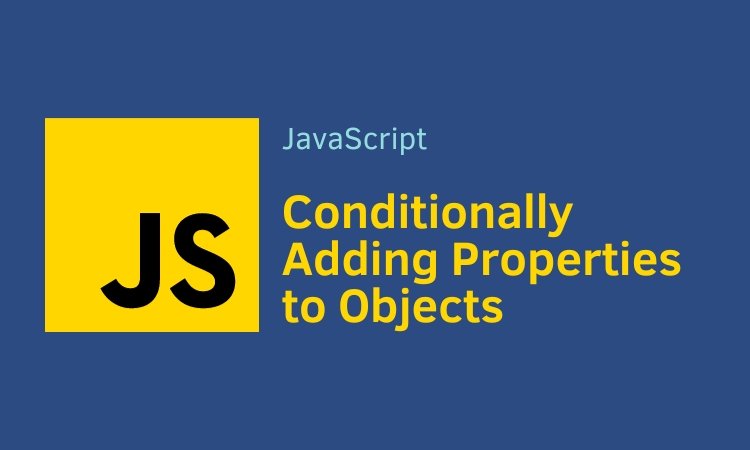Mastering JavaScript: A Guide to Conditionally Adding Properties to Objects
Before we dive into adding properties conditionally, let’s make sure we understand the basics. In JavaScript, objects are important because they’re like flexible containers for information. Adding properties to objects is a common task, but doing it conditionally adds an extra layer of complexity to your code.
In JavaScript, an object is a basic type of data that holds a bunch of key-value pairs. It’s a versatile and dynamic tool used to store and organize information. Objects can contain different kinds of values like numbers, words, functions, and even other objects.
An object’s structure is made up of properties and methods. Properties are the key-value pairs that describe the characteristics of the object. Methods, on the other hand, are functions linked to the object, letting it do things.
Conditionally Adding Properties to Objects Using if Statement
The fundamental approach involves using the if statement to check a specific condition. If the condition evaluates to true, you proceed to add the desired property. Let’s break it down with a simple example:
// Sample object
let myObject = {};
// Conditionally add property
if (condition) {
myObject.newProperty = 'This is a new property!';
}
Replace ‘condition’ with your actual condition, and voila, you’ve just conditionally added a property to your object! In this code example we are checking if the condition is true then we add new property to this object called newProperty.
Conditionally Adding Properties to Objects Using Ternary Operators
In JavaScript, a ternary operator is a concise way to write an if-else statement, providing a shorthand for making decisions in a single line of code. The ternary operator takes three operands: a condition followed by a question mark (?), the expression to execute if the condition is true, a colon (:), and the expression to execute if the condition is false.
For a more concise and elegant solution, consider utilizing ternary operators. This approach condenses the if statement into a single line, ideal for cleaner code:
// Sample object
let myObject = {};
// Conditionally add property using ternary operator
condition ? myObject.newProperty = 'This is a new property!' : null;
Conditionally Adding Properties to Objects Using Spread Operator (3-dots operator):
In JavaScript, you can add properties conditionally to an object using a single instruction and the spread (...) operator for object restructuring.
This approach allows for concise and elegant code. Here’s an example:
// Sample object
let myObject = {};
// Condition
let condition = true;
// Use object restructuring with the spread operator
myObject = {
...myObject,
...(condition && { newProperty: 'This is a new property!' })
};
// Check the result
console.log(myObject);
In this example, the spread operator (...) is employed to copy the existing properties of myObject. The conditional statement (condition && { newProperty: 'This is a new property!' }) is evaluated. If the condition is true, it returns an object with the new property; otherwise, it returns an empty object. The spread operator then merges this result into myObject.
This method offers a succinct way to conditionally add properties to an object while leveraging the power of object restructuring and the three-dots operator in JavaScript.
Examples
Let’s explore more complex examples for conditionally adding properties to objects in JavaScript using both the if statement and the ternary operator, as well as the three-dots operator for object restructuring:
let userProfile = {
username: 'JohnDoe',
role: 'user'
};
let isAdmin = true;
if (isAdmin) {
userProfile = {
...userProfile,
role: 'admin',
accessLevel: 'full'
};
}
console.log(userProfile);
In this example, if the user is an admin (isAdmin is true), we conditionally add properties like role and accessLevel to the userProfile object using object restructuring.
let product = {
name: 'Smartphone',
price: 599.99
};
let discountAvailable = true;
product = {
...product,
discountedPrice: discountAvailable ? product.price * 0.9 : product.price
};
console.log(product);
Here, the ternary operator is employed to determine if a discount is available (discountAvailable). If true, the discountedPrice property is added to the product object with a discounted value; otherwise, it retains the original price.
let userSettings = {
theme: 'light',
fontSize: 'medium'
};
let isNightMode = false;
let increaseFontSize = true;
userSettings = {
...userSettings,
...(isNightMode && { theme: 'dark' }),
...(increaseFontSize && { fontSize: 'large' })
};
console.log(userSettings);
In this case, multiple conditions are considered using the three-dots operator. If isNightMode is true, the theme property is updated to ‘dark’. If increaseFontSize is true, the fontSize property is updated to ‘large’. The object restructuring ensures these changes are applied without duplicating code.
These examples showcase various scenarios of conditionally adding properties to objects, demonstrating the flexibility and readability offered by JavaScript’s syntax and features.
Conclusion
By adopting the practice of conditionally adding properties, developers can write more versatile, modular, and adaptive code. This approach ensures that objects evolve based on specific conditions, making the codebase more readable, maintainable, and responsive to the dynamic nature of web development.
In the realm of JavaScript, the ability to conditionally add properties to objects is a skill that elevates your coding prowess.
Whether you’re handling dynamic forms, creating responsive UIs, or tackling other challenges, this technique empowers you to write more versatile and efficient code.
Enhance your JavaScript journey by incorporating this skill into your toolkit. Remember, mastering JavaScript is a journey, not a destination, and each new skill opens doors to endless possibilities.
Happy coding!





0 Comments